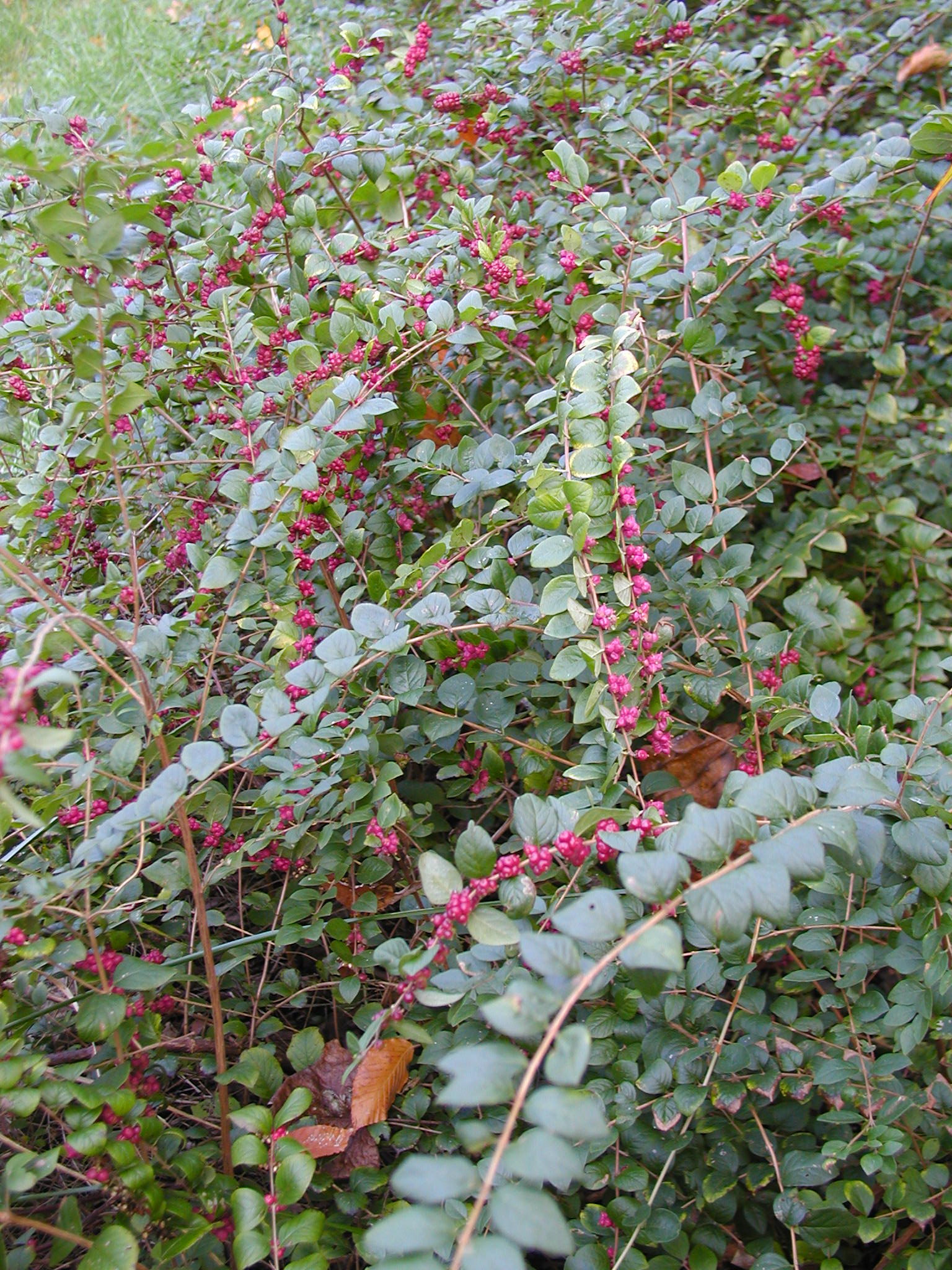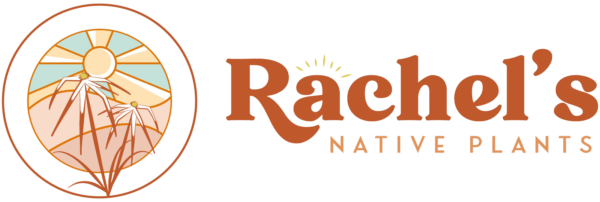Coralberry is a very showy colonial shrub native in the eastern and central United States, as well as central Canada (Ontario) and northeastern Mexico. It reaches 4+ feet, with smooth, opposite, dull green, oval-shaped leaves and shreddy bark. Greenish white flowers are tucked under the leaves in early summer, developing later in the season into beautiful coral pink (hence the name) / wine red berries that persist well into winter. The arching branches root where they touch the earth, and woody runners also spread the colony. The root system is deep and branched. A colorful Coralberry thicket is great for holding soil on slopes while attracting and supporting insects, birds and mammalian wildlife.
NURSERY HOURS
Wednesday: 10-4 Thursday: 10-6 Friday-Saturday: 10-4 Sunday: 12-4
Symphoricarpos orbiculatus

Key Info
Scientific Name: Symphoricarpos orbiculatus Moench.
Common Names: Corralberry, Buckbrush, Indian Currant, Waxberry
Family Names: Caprifoliaceae (Honeysuckle Family)
Plant Type: Tree / Shrub
Leaf Retention: Deciduous
Flower Color: Greenish yellow with purple tinges
Special Characteristics: Showy fruit, Good wildlife cover/habitat, Attracts butterflies, Tolerates dry conditions, Interesting bark, Attracts birds, Soil adaptable, Rhizomatous
Additional Info
Habit: This is a sprawling shrub 2 - 4 feet tall with long, arching branches which root where they contact the ground. The bark is shreddy and the root system consists of a woody, branching taproot.
Height: 2' - 4'
Spread: 1'
Soil Conditions: Average to dry; acid, neutral and alkaline soils; rocky, sandy, loamy or clay soils; can grow in heavy clay and nutritionally poor soils.
Leaves: Soft, opposite, oval to elliptic leaves 1 - 2 inches long by 1 - 1¼ inches across, with smooth, turned down margins, pinnate venation, and a rounded or broadly pointed tip, paler (whitish green) and more pubescent on the underside. Each leaf has a short petiole up to ¼" long.
Flowers (or reproductive structures: In mid- to late-summer, sessile, five-parted, bell-shaped flowers, whitish green/yellow with pink accents, bloom in clusters in leaf axils and at the ends of twigs. Individual flowers are about ¼" long.
Fruit: Flower clusters develop into reddish pink berry-like drupes about ¼ inch across, each containing two flat, oval seeds. Berries ripen in fall and persist well into winter.
Natural Distribution: Shaded woods, thickets, open woodlands, streambanks, river banks. Common in Post Oak woodlands (Quercus stellata).
USDA Hardiness Zone: 2 to 7
USDA Wetland Indicator Status in NC: FACU
Pollination: Bees, butterflies, other insects.
Wildlife Connections: The flowers provide nectar for bees, wasps, and flies. Foliage supports a number of moth caterpillars. The berries provide winter food for birds, including the Bobwhite and Robin. Sometimes the Coralberry is referred to as Buckbrush because this plant is a favorite of White-tailed Deer. Songbirds, ground birds, small mammals, and browsers use this plant for food, cover, and nesting sites. (Illinoiswildflowers.org)
Propagation: By seed or by softwood or semi-hardwood cuttings in spring from current year's growth.
